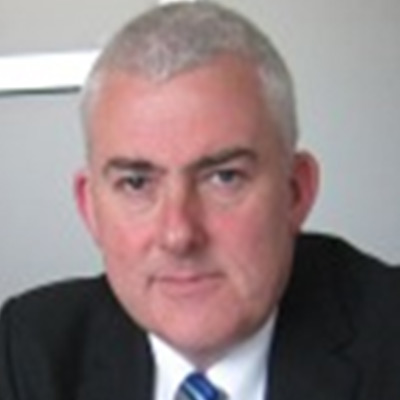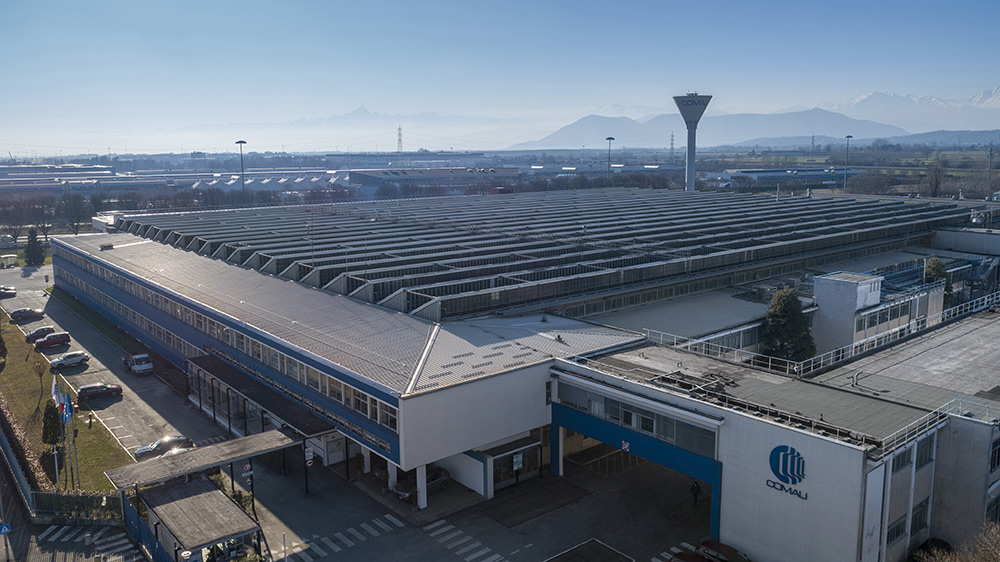5 May 2021
Interview with Andrew Lloyd, Diversified Automation Systems and Electromobility Segment Leader at Comau
This month, we sat down with Andrew Lloyd, Diversified Automation Systems and Electromobility Segment Leader at Comau, to discuss the growing importance of automation and the impact it could have on the wind industry in the years ahead.

Can you tell our readers a little about your organisation? (general history in Europe, countries in which you are active, specific projects you are involved in, industry players you have worked with, etc.)
Comau’s history of solving challenging technical problems goes back almost 50 years. In 1973, the company began as Consorzio Macchine Utensili and was formed by the same Torino-based engineers and companies that helped build the landmark Volga Automobile Plant in Russia. By the mid-1980s, Comau had already developed the first robotised system and the first hydraulic robot.
Over the years that followed, the company expanded globally and launched a series of important innovations in electrification, digital intelligence, collaborative robotics, mobile technologies, Industry 4.0 enablers and more.
Comau is recognised as a worldwide leader in delivering advanced industrial automation products and systems that help companies experience higher quality, increased productivity, faster time-to-market and lower overall costs.
As part of its HUMANufacturing approach, through which mankind is at the centre of a safe, synergistic and sustainable manufacturing environment, Comau is helping companies design and deploy tailored strategies to streamline processes and improve the flexibility of their production potential.
In the renewable energy sector, Comau automation is being used for large-scale solar panel installation and wind turbine manufacturing. Similarly, we play a decisive role in operations, maintenance and components manufacturing by providing innovative automation. Finally, our offer also extends to project management and consultancy, as well as training for a wide range of industrial segments.
With an international network of seven innovation centres, five digital hubs and eight manufacturing plants that span 14 countries and employ more than 9,000 people, our global footprint allows us to respond quickly to the needs of our customers, no matter where they are located in the world.
What are the most exciting developments you have seen in the wind industry?
I am quite impressed by the speed with which wind energy is evolving in Europe and beyond. In addition to a greater deployment of offshore turbines, wind blades have become longer, stronger and more efficient, materials have become lighter, and new technologies are helping companies better meet the growing demand for new wind farms. Yet the double-digit growth of Europe’s wind capacity over the last few years is a fraction of the clean energy we will ultimately need to comply with the Paris Agreement.
It’s exciting to witness the increasing maturity of the market. Similarly, it is exciting to have the opportunity to work with key players and explore ways of lowering costs and increasing throughput with the help of flexible and scalable production environments.
We believe a greater use of strategic automation within the industry could help alleviate supply issues while increasing standardisation, quality and on-time delivery. To this end, Comau is looking forward to helping the market explore what we call “right-sized automation” – an ideal mix between automated and manual skills that is tailored to the needs of each specific customer.
What changes would you like to see in the wind industry?
One of the biggest challenges right now is that automation technology is a relatively new territory for manufacturers. Despite the promising numbers and market demand, wind power as a sector is reliant on using highly manual processes; either due to the specialised nature of their product or because their current production volumes do not yet require robotic-driven manufacturing lines. Yet automation is much more than high-speed robots. When approached in a holistic manner, it can be designed in a way that helps companies significantly increase their production throughput in an affordable manner. Linear manufacturing systems that seamlessly combine manual and automatic processes are a perfect example, as they can help increase the overall yield of the process while decreasing the possibility of production defects.
Looking at the most recent outlook for 2021-2025, WindEurope estimates that the EU27 + UK is expected to install 105 GW of new wind farms over the next five years, 70% of which will be onshore. So, you can see why automation and process optimisation is becoming increasingly attractive. Whether starting with a single automated step or integrating robotics within a larger production line, I truly believe automation is one of the best ways to help wind power customers face growing market demands. More importantly, strategic automation allows us to create value with scalable, easy-to-use solutions that can be ramped up or down as needed.
Going forward, what role do you see your organisation playing in the future development of wind energy?
Our design for manufacturing approach is based on the belief that in working alongside our customer to combine product design and process planning activities, we create the foundation for an easier and more efficient manufacturing stream. In many cases, the initial level of automation may be limited to one or two processes. Yet by taking the end-to-end manufacturing process into account from the very beginning, the entire system can be set up to handle variable production requirements. This lets manufacturers increase their performance while protecting their investment.

Comau headquarters in Turin
How has WindEurope membership benefited your organisation?
WindEurope is a platform for us to exchange ideas and learn from manufacturers, service companies and other players operating in the global market. Gaining insight into the primary pain points is critical if we are going to successfully leverage our experience in the automation arena to explore solutions that can help speed up the production and deployment of clean wind energy systems. On a personal note, it’s an honour to be part of the efforts to expand the potential for wind power and to cooperate with other industry leaders at such a high level.
If we look ten years ahead, what do you hope to have achieved?
Comau has a strong history of applying advanced research and innovation to manufacturing processes within mission-critical industries, automotive in particular. This proven expertise is supported by streamlined process dynamics, Industry 4.0 connectivity, industrial robotics, advanced vision systems, artificial intelligence, machine learning capabilities and powerful digital services and products able to transmit, elaborate and analyse machine and process data.
My hope is that by the next decade we will have become a trusted point of reference for wind energy and renewables. We’ll do this by providing problem-centric solutions that support the market by lowering the break-even point of renewable energy investments. More importantly, we’ll do this by creating and sharing value with the customer and for the industry as a whole. My vision is to leverage our longstanding experience to help promote and enable a cleaner, more sustainable future.

